What is Blockchain & How does it work?
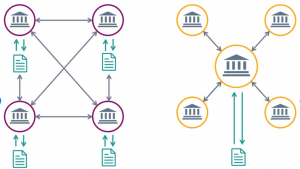
Blockchain is a distributed database that allows for secure, transparent, and tamper-proof transactions. It was first introduced in 2009 as the underlying technology behind Bitcoin. Blockchain has since garnered a great deal of attention due to its potential applications in a variety of industries. In this blog post, we will explore what blockchain is and how it works! What is Blockchain? Blockchain is a distributed database that allows for secure, transparent, and tamper-proof transactions. Blockchain was originally conceived as the underlying technology for the cryptocurrency bitcoin. However, Blockchain has since been found to have many other potential use cases. The key concepts behind Blockchain are decentralization, immutability, and consensus. Blockchain …
When to Use Which Clustering Algorithms?
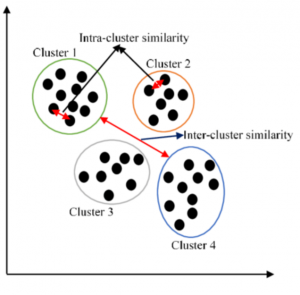
There are many clustering machine learning algorithms to choose from when you want to cluster data. But which one should you use in a particular situation? In this blog post, we will explore the different clustering algorithms and explain when each one is most appropriate. We will also provide examples so that you can see how these algorithms work in practice. What clustering is and why it’s useful Simply speaking, clustering is a technique used in machine learning to group data points together. The goal of clustering is to find natural groups, or clusters, in the data. Clustering algorithms are used to automatically find these groups. Clustering is useful because …
AI / Data Science Operating Model: Teams, Processes
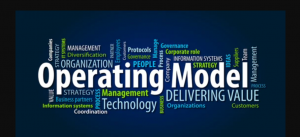
Realizing value from AI/data science or machine learning projects requires the coordination of many different teams based on an appropriate operating model. If you want to build an effective AI/data science operation, you need to create a data science operating model that outlines the steps involved in how teams are structured, how data science projects are implemented, how the maturity of data science practice is evaluated and an overall governance model which is used to keep a track of data science initiatives. In this blog post, we will discuss the key components of a data science operating model and provide examples of how to optimize your data science process. AI …
Deductive & Inductive Reasoning: Examples, Differences
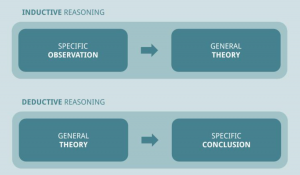
When it comes to data science, there are two main types of reasoning that you need to be familiar with: deductive and inductive. Both of these techniques are important in order to make sound decisions based on the data that you’re working with. In this blog post, we’ll take a closer look at what deductive and inductive reasoning are, what are their differences, and how they’re related to each other. What is deductive reasoning? Deductive reasoning is an important tool in data science. Deductive reasoning is the process of deriving a conclusion based on premises that are known or assumed to be true. In other words, deductive reasoning allows you …
What is Data Quality Management? Concepts & Examples
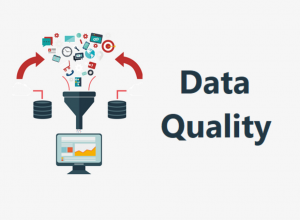
What is data quality? This is a question that many people ask, but it is not always easy to answer. Simply put, data quality refers to the accuracy and completeness of data. If data is not accurate, it can lead to all sorts of problems for businesses. That’s why data quality is so important – it ensures that your data is reliable and can be used for decision-making purposes. Data is at the heart of any enterprise. It is essential for making sound business decisions, understanding customers, and improving operations. However, not all data is created equal. In order to make the most out of your data, you need to …
Steps for Evaluating & Validating Time-Series Models
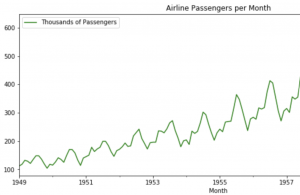
Time-series machine learning models are becoming increasingly popular due to the large volume of data that is now available. These models can be used to make predictions about future events, and they are often more accurate than traditional methods. However, it is important to properly evaluate (check accuracy by performing error analysis) and validate these models before you put them into production. In this blog post, we will discuss the different ways that you can evaluate and validate time series machine learning models. We will also provide some tips on how to improve your results. As data scientists, it is important to learn the techniques related to evaluating time-series models. …
What is Explainable AI? Concepts & Examples
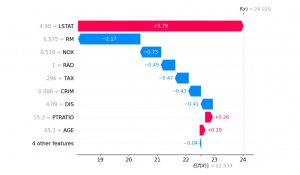
What is explainable AI (XAI)? This is a question that more people are asking, as they become aware of the potential implications of artificial intelligence. Simply put, explainable AI is the form of AI that can be understood by humans. It is AI that provides an explanation for its decisions and actions. It provides humans with the ability to explain how decisions are made by machines. This helps people trust and understand what’s happening, instead of feeling like their information is being taken advantage of or used without their permission. This is important, as many people are concerned about the increasing use of AI in our lives, especially in healthcare. …
Machine Learning with Alteryx: Examples
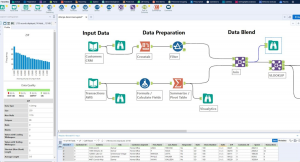
Alteryx is a self-service data analytics software platform that enables users to easily prep, blend, and analyze data all in one place. It is a powerful tool that can be used in a variety of machine learning scenarios. It can be used to clean and prepare data, and develop, evaluate and deploy machine learning (ML) models. It offers a variety of features and tools that can be used to preprocess data, choose algorithms, train models, and evaluate results. In this blog post, we will discuss some of the ways that Alteryx can be used in machine learning. We will also provide examples of how to use Alteryx in machine learning scenarios. …
Digital Transformation Strategy: What, Why & How?

Digital transformation is a digital strategy that aims to change the way an organization operates. It’s not just about digital marketing anymore – digital transformation includes all aspects of digital engagement from customer service, product development, and delivery, operations, etc. And it requires a holistic approach to digital transformation without any silos or strategic gaps in between departments. In this blog post, we will cover what digital transformation is and why organizations should take advantage of this strategy. We’ll also look at how digital transformation is happening in different industries. What is digital transformation? Digital transformation is a digital strategy that aims to change the way an organization operates and …
Hate Speech Detection Using Machine Learning

Hate speech is a big problem on the internet. It can be found on social media, in comment sections, and even in online forums. Detecting hate speech is important because it can have harmful effects on society. In this blog post, we will discuss the latest techniques for detecting hate speech using machine learning algorithms. We will also provide examples of how these algorithms work. What is hate speech? Hate speech can be defined as any speech that targets a group of people based on their race, religion, ethnicity, national origin, sexual orientation, or gender identity. Hate speech is often used to spread hate and bigotry. It can also be …
Machine Learning with Graphs: Free online course(Stanford)
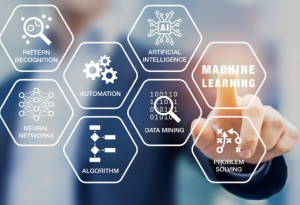
Are you interested in learning the concepts of machine learning with Graphs? Stanford University is offering a free online course in machine learning titled Machine Learning with Graphs (CS224W). The lecture videos will be available on Canvas for all the enrolled Stanford students. The lecture slides and assignments will be posted online as the course progresses. This class will be offered next in Fall 2022. After completing this course, you will be able to apply machine learning methods to a variety of real-world problems. The course titled Machine learning with Graphs, will teach you how to apply machine learning methods to graphs and networks. Complex data can be represented as …
Differences Between MLOps, ModelOps, AIOps, DataOps
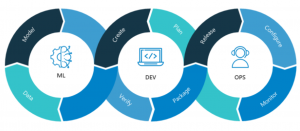
In this blog post, we will talk about MLOps, AIOps, ModelOps and Dataops and difference between these terms. MLOps stands for Machine Learning Operations, AIOps stands for Artificial Intelligence-Operations (AI for IT operations), DataOps stands for Data operations and ModelOps stands for model operations. As data analytics stakeholders, it is important to understand the differences between MLOps, AIOps, Dataops, and ModelOps. For setting up AI/ML practice, it is important to plan to set up teams and practices around AIOps, MLOps/ModelOps and DataOps. What is MLOps? MLOps (or ML Operations) refers to the process of managing your ML workflows. It’s a subset of ModelOps that focuses on operationalizing ML models that …
Business Analytics Team Structure: Roles/ Responsibilities
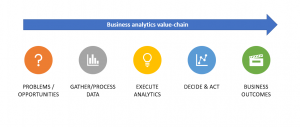
Business analytics is a business function that has been around for years, but it’s only recently gained traction as one of the most important business functions. Organizations are now realizing how business analytics can help them increase revenue and improve business operations. But before you bring on a business analytics team, you need to determine if your company needs full-time or part-time team members or both. It might seem logical to hire full-time staff members just because they’re in demand, but this isn’t always necessary. If your business operates without any external data sets and doesn’t have complex reporting and advanced analytics needs then it may be more cost-effective to …
Linear Regression Interview Questions for Data Scientists
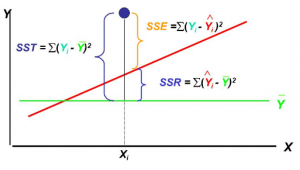
This page lists down 40 regression (linear/univariate, multiple/multilinear/multivariate) interview questions (in form of objective questions) which may prove to be helpful for Data Scientists / Machine Learning enthusiasts. Those appearing for interviews for machine learning/data scientist freshers/intern/beginners positions would also find these questions very helpful and handy enough to quickly brush up / check your knowledge and prepare accordingly. Practice Tests on Regression Analysis These interview questions are split into four different practice tests with questions and answers which can be found on following page: Linear, Multiple regression interview questions and answers – Set 1 Linear, Multiple regression interview questions and answers – Set 2 Linear, Multiple regression interview questions …
Most In-Demand Skills for Data Scientists in 2022
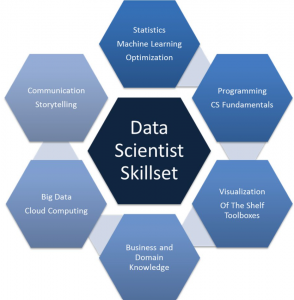
The data science field is growing rapidly and data scientists are in high demand. If you want to enter this field, it’s important that you have the right skills. In this blog post, we’ll explore the most in-demand skills of data scientist employers are looking for the most and how to develop these skills so that you can find a job as a data scientist. Strong knowledge and experience with Statistical/ML methods: Strong familiarity with statistical concepts such as probability distributions (e.g., normal distribution), concepts of hypothesis testing, regression analysis, etc is essential for becoming a great data scientist. One of the most important ask for a data scientist is …
One-sample Z-test for Means: Formula & Examples
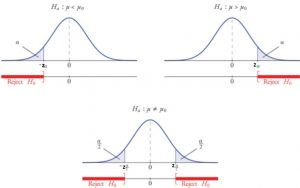
One sample Z-test for means is one of the statistical techniques used for testing hypothesis related to whether the sample belongs to a population. As a data scientist, you must get a good understanding of the z-test and its applications to test the hypothesis for your statistical models. In this blog post, we will discuss the one sample z-test for means and its concepts with an example. You may want to check my post on hypothesis testing titled – Hypothesis testing explained with examples What is One-sample Z-test for Means? Z-test is usually referred to as a 1-sample Z-test for means that is used to test the hypothesis about the …
I found it very helpful. However the differences are not too understandable for me